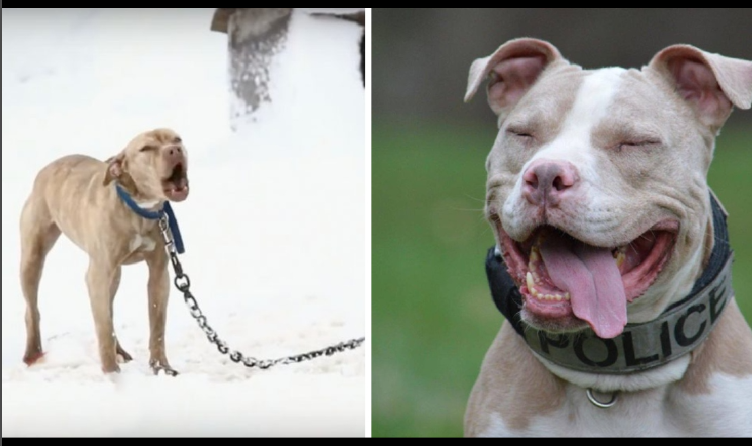Stevie was rescued from a South Carolina backyard (together with another dog named Wonder), where he had been tied up for much of his eight years of life. He was brought up by the Lancaster County SPCA, which collaborates with other rescue organizations such as Diamonds in the Ruff in New York. When Diamonds in the Ruff learned about Stevie, they realized he had to be a part of their rescue family.

CREDIT: ERIN BOYD
When Stevie initially arrived to Diamonds in the Ruff, it was evident that he had a lot on his plate. Stevie was not only blind, but he also had fleas, worms, and lost fur. They eventually discovered he had an old corn cob caught in his intestines, which required surgery to remove. In addition to dealing with his medical difficulties, his foster family had to be patient with him as he adjusted to life inside with a loving family.

CREDIT: ERIN BOYD
“He slept the most of the way [home], but would start snarling and barking every now and then in his box,” Stevie’s foster mom, Erin Boyd, told The Dodo. “We realized he was only trying to protect himself. We carried the box inside when we arrived home, and he refused to get out. We were particularly cautious since he couldn’t see and we didn’t know him yet.”

CREDIT: ERIN BOYD
Stevie began to come out of his shell as he began to heal physically and mentally, and it wasn’t long before he’d changed into the biggest mush of a dog. His foster family enjoyed seeing him experience so many firsts, including the first time he slept in his own bed.
Stevie’s foster family understood he had probably never slept on a soft dog bed before, so they made sure to provide him with one. He was so pleased when he felt how soft it was with his paws that he instantly began jumping for joy.
Stevie now needs to perform his little jumping dance whenever he comes across a dog bed. He’s just overjoyed to have something that’s supposed to make him feel nice and comfy, and he needs to show everyone how pleased he is all the time.

CREDIT: ERIN BOYD
“He bounces, occasionally chews on a toy, and then passes out,” Boyd explained.
Stevie has adjusted incredibly well to his foster family despite his blindness, and everyone is amazed at how far he’s gone.

CREDIT: ERIN BOYD
“He’s really clever,” Boyd added. “He rapidly figured how how to go about my place.” He can get from the backyard to the garage and up the three stairs to the home. When he walks in, he knows to wait for a reward in the kitchen and to jump on my little circular ottoman to climb onto my bed. He naps a lot, but he also enjoys snuggling, going on walks, chewing on noisy toys, and giving kisses!”

CREDIT: ERIN BOYD
Stevie is presently available for adoption, and he’s seeking for a local family who understands and respects how unique he is. He requires a home with no other pets, preferably with someone who is home frequently and can provide him with all of the attention he missed out on during his first eight years.

CREDIT: ERIN BOYD
“[Someone] who will just snuggle up on the couch with him, take him on walks, let him soak up the sun, and give him plenty of love,” Boyd added.
Stevie has been through a lot, but now that he has his nice dog beds and a lot of humans to adore him, he believes everything will be great.
6 Most Common Cat Health Problems
Cats are good at self-maintenance. But even your fastidious feline can’t prevent some of these more common cat diseases and health issues.
1. Vomiting
Vomiting is a very common problem with cats with a multitude of causes. They range from eating something poisonous or inedible (like string), to infection, urinary tract disease, or diabetes to hairballs.
2. Feline Lower Urinary Tract Diseases (FLUTD)
TSome estimates say as many as 3% of cats seen by vets have feline lower urinary tract disease (FLUTD), which is actually a group of feline diseases with multiple causes.
List bellow:
Drinking more
Straining to urinate
Bloody urine
Urinating in unusual places
Crying when urinating
Licking around the urinary area (often because of pain)
3. Fleas
Fleas are a very common external feline health problem. But it’s one you can easily treat. Signs your cat has fleas include:
Flea dirt on its skin (they look like tiny black dots)
Constant scratching
Frequent licking
Red or irritated skin
Hair loss
Skin infections or hot spots
Read More



Leave a Reply